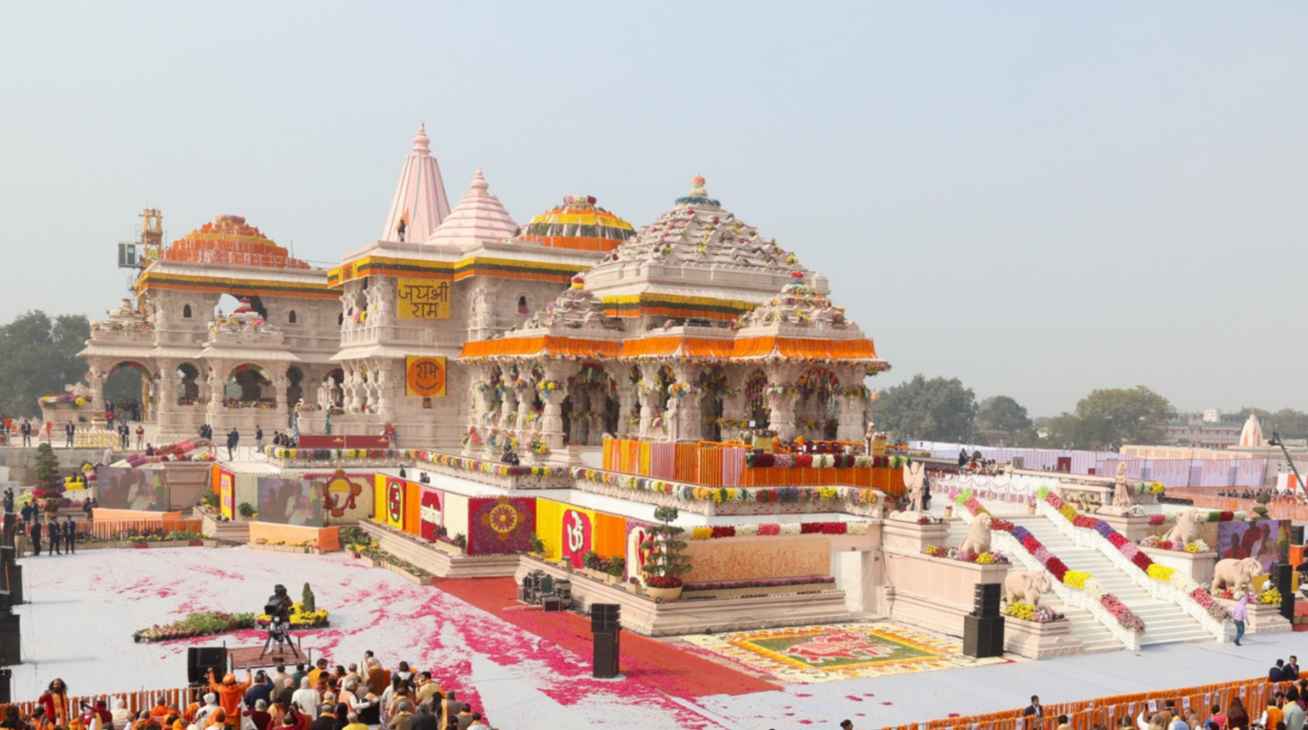Navratri 2024: Everything About Dates, Time, Rituals & Significance
Navratri, a Hindu festival, spans nine nights, each dedicated to a form of Goddess Durga. Navratri 2024 Beginning and End Dates in India.

Shardiya Navratri, often referred to as Shrad Navratri, is a highly significant and culturally rich Hindu festival that is celebrated with great enthusiasm and devotion across various regions of India. This vibrant festival is dedicated to the worship of the nine distinct forms of Goddess Durga, who symbolizes power and the triumph of good over evil.
Spanning nine days, this festival, Navratri 2024 is a time of joy, rituals, and cultural festivities. It takes place during the lunar month of Ashwin, which typically falls between the months of September and October in the Gregorian calendar. Each day of the festival is marked by specific rituals, prayers, and offerings to the goddess, drawing countless devotees from all walks of life to participate in the celebrations.
Of the four Navratris celebrated annually—Magha (winter), Chaitra (spring), Ashadha (monsoon), and Sharad or Shardiya (autumn)—Shardiya Navratri holds the greatest significance and is commonly known as Maha Navratri.

Origin
The festival reaches its grand conclusion on the tenth day, which is celebrated as Dussehra, also referred to as Vijaya Dashami. This significant day marks the end of the vibrant celebrations that have been ongoing, bringing together the rich traditions and cultural heritage of the community.
This significant period is dedicated to commemorating the fierce and intense battle that took place between the powerful Goddess Durga and the formidable demon Mahishasura. This epic struggle lasted for a total of nine days, showcasing various forms of bravery and divine intervention, ultimately culminating in Mahishasura’s defeat on the tenth day, which is celebrated with great fervor and devotion.

This victory symbolises the triumph of good over evil, showcasing the enduring theme of righteousness prevailing in the face of malevolent forces. Additionally, Dussehra holds great significance for yet another reason: it celebrates the monumental victory of Lord Rama over the formidable demon king Ravana, which ultimately culminated in the heroic rescue of the beloved Goddess Sita. This festival, therefore, not only commemorates a historic battle but also embodies the values of courage, duty, and justice.
During Navratri 2024, the period of Shardiya Navratri will come to an end on Saturday, October 12. Coincidentally, this concluding day will also see the celebration of Dussehra, which will be observed on the very same date.

Days And Timings
Navratri 2024 will be celebrated from October 3 to October 12, encompassing a series of vibrant and spiritually significant rituals that honor the divine feminine energy. During these nine nights, devotees engage in various cultural and religious practices, such as fasting, dancing, and prayer, creating a joyful atmosphere filled with devotion and celebration.

First Day : Shailputri
The much-anticipated festival kicks off on Thursday, October 3, and this opening day of Navratri 2024 features the significant rituals of Ghatasthapana and Shailputri Puja. This special day is distinguished by the vibrant and auspicious colour yellow, symbolizing positivity and prosperity.

Second Day : Brahmacharini
The following day, which is Friday, October 4, will prominently feature celebrations such as Chandra Darshana and Brahmacharini Puja. These significant events are represented by the color green, symbolizing freshness and harmony.

Third Day : Chandraghanta
On Saturday, October 5, the focus of the day will shift to the celebration of Sindoor Tritiya and the observance of Chandraghanta Puja, where the designated colour for the festivities will be grey. This day promises to be filled with various rituals and cultural significance associated with these events.

Fourth Day : Kushmanda
Sunday, October 6, is dedicated to the celebration of Vinayaka Chaturthi, a festival that holds great significance and is symbolized by the vibrant color orange. This day is marked by various cultural and religious activities that pay tribute to Lord Ganesha, who is revered as the remover of obstacles and the god of wisdom and new beginnings.

Fifth Day : Skandamata
As the week progresses, specifically on Monday, October 7, two significant events come to the forefront: Kushmanda Puja and Upang Lalita Vrat. These observances hold cultural and spiritual importance, and during this time, the colour white is specifically associated with the celebrations and rituals involved.

Sixth Day : Katyayani
Tuesday, October 8, is specifically reserved for the auspicious celebration of Skandamata Puja, which is represented by the vibrant color red. This day holds particular significance for devotees who honor this goddess.

Seventh Day : Kaalratri
Following this, on Wednesday, October 9, the events will shift focus to Saraswati Avahan as well as Katyayani Puja, where royal blue will be the prominent theme color, further enhancing the spiritual atmosphere of the celebrations on that day.

Eighth Day : Mahagauri
On Thursday, October 10, a significant number of devotees will come together to actively engage in the auspicious festivities of Saraswati Puja and Kalaratri Puja. These important events will be associated with the color pink, which symbolizes the spirit of devotion and celebration during this time.

Ninth Day : Siddhidatri
The festivities, which have been building in excitement, reach a magnificent crescendo on Friday, October 11, with the celebration of Durga Ashtami, along with the important rituals of Mahagauri Puja and Sandhi Puja. This vibrant occasion is particularly highlighted by the striking and beautiful colour purple, which plays a significant role in the visual elements of the celebrations.

Culmination Day
Navratri 2024 is set to conclude on Saturday, October 12, with a series of significant events including Ayudha Puja, Navami Homa, Vijayadashami, and Durga Visarjan. It is important to note that for these particular celebrations, no specific colour has been designated or assigned to be used.
Important Timings
For those who are observing the festival of Vijayadashami after Navratri 2024, the important timing details are provided below for your reference: the Dashami Tithi actually begins at 10:58 AM on October 12, and it will continue until it ends at 9:08 AM on October 13. It is essential to mark these specific times if you plan to participate in the celebrations or rituals associated with the festival.
The Shravana Nakshatra, an important lunar mansion in Vedic astrology, will commence at 5:25 AM on October 12 and is set to conclude at 4:27 AM the following day, October 13. This timing marks the beginning and end of this auspicious period.
The auspicious Vijay Muhurat is specifically scheduled to occur between the times of 2:03 PM and 2:49 PM on the date of October 12. In addition to that, the Aparahna Puja is set to take place during the time frame from 1:17 PM to 3:35 PM on the following date, which is October 13.
Significance
The Navratri 2024 honours the nine divine forms of Goddess Shakti, with each day of the celebration dedicated to a different goddess, allowing devotees to connect with each manifestation of her power and grace.
It symbolises righteousness and the glorious triumph of good over evil, imparting important moral values such as bravery and virtue, encouraging individuals to embody these ideals in their daily lives and interactions.

Many devotees choose to observe fasting throughout the entire nine days of Navratri 2024, demonstrating their commitment and dedication. However, there are also others who may opt to fast only during specific periods, such as just the first two days or alternatively, the last two days. This variation in fasting practices allows individuals to engage with the tradition in a way that aligns with their personal beliefs and circumstances.
Beginning on the Pratipada of Shukla Paksha in the month of Ashwin, which typically falls in September or October, devotees of Goddess Durga engage in a series of fasting and worship rituals. During this time, they recite sacred texts such as the Durga Stotra and the Durga Chalisa, which are believed to hold great spiritual significance. The underlying belief among these devotees is that sincere devotion and dedication to the goddess will fulfil their heartfelt wishes and aspirations, leading them towards a path of spiritual growth and fulfillment.

Each day of the vibrant and festive occasion of Navratri is uniquely associated with a particular avatar of the Hindu goddess Durga. These avatars symbolize different aspects of her divine powers and teachings. Among them are the glowing Shailaputri, the devoted Brahmacharini, and the radiant Chandraghanta, each representing a distinct phase and facet of the goddess’s strength and grace.
Additionally, the festival is celebrated as a significant harvest festival, honouring the Goddess, who is revered as the nurturing force behind life, growth, and creation in the world. This occasion serves to highlight the importance of gratitude and appreciation for the abundance that nature provides.




















